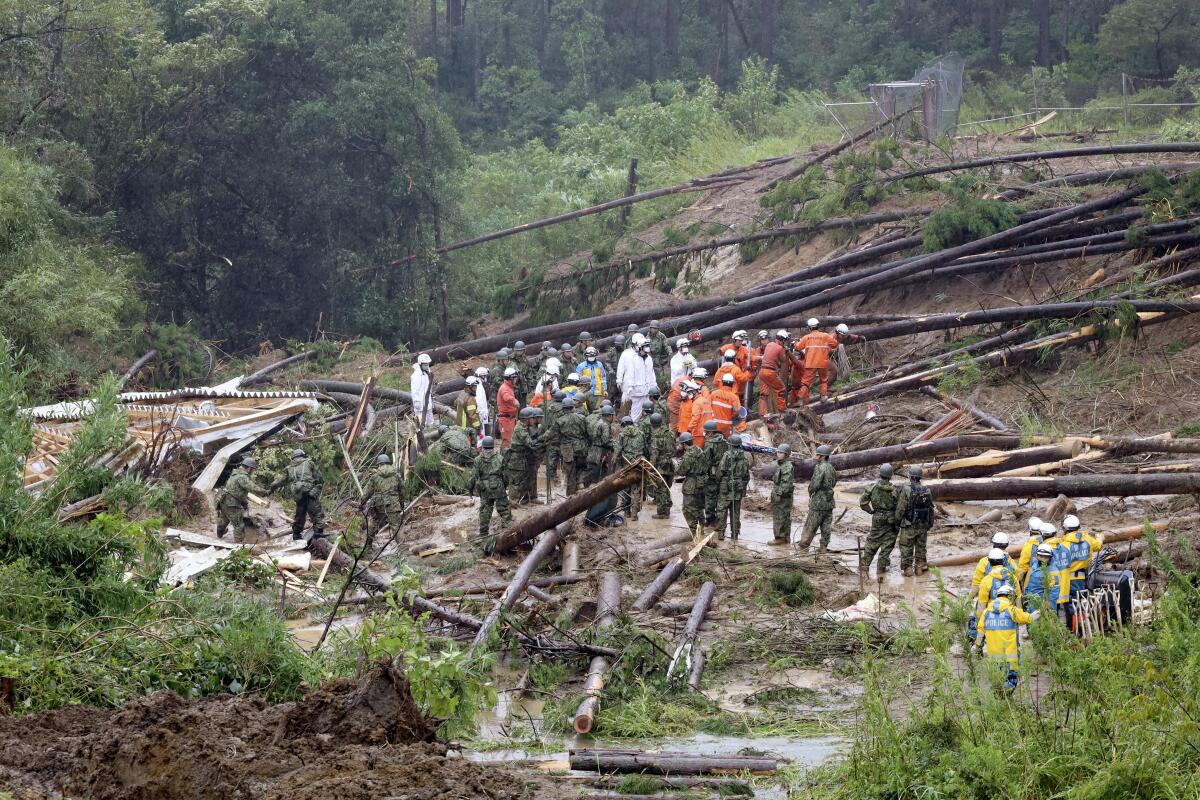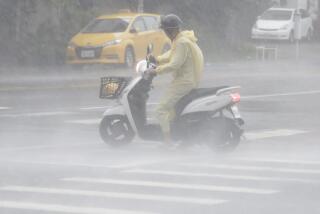Powerful typhoon hits southwest Japan, killing at least one person

- Share via
TOKYO — A tropical storm slammed southwestern Japan with rainfall and winds Monday, leaving one person dead and another missing, as it swerved north toward Tokyo.
Residential streets were flooded with muddy water from rivers, and swaths of homes lost power after Typhoon Nanmadol made landfall in the Kyushu region Sunday before weakening to a tropical storm.
A man was found dead early Monday in his car, which was sunk in water on a farm, said Yoshiharu Maeda, a disaster-response official in the city of Miyakonojo, in Miyazaki prefecture. A person was also missing after a cottage was caught in a landslide, according to a prefectural official.
Nanmadol has sustained winds of 67 mph and gusts of up to 100 mph, according to the Japan Meteorological Agency.
Tens of thousands of people spent the night in gymnasiums and other facilities in a precautionary evacuation of vulnerable homes.
More than 60 people were injured, including those who fell down in the rain or were hit by shards of glass, according to Japanese media reports.
The hurricane unleashed landslides amid lashing rain that could reach historic levels, with up to 30 inches possible in the east and south.
Torrential winds smashed signboards. A construction crane snapped and a window of a pachinko parlor was shattered in Kagoshima city, southwestern Japan.
Bullet trains and airlines suspended service. Warnings were issued about landslides and swelling rivers. Convenience stores shut and delivery services were halted in southwestern Japan, while some highways were closed and people had some problems with cellphone connections.
The storm is forecast to continue dumping rain on its northeasterly path over Japan’s main island of Honshu, before moving over Tokyo and then northeastern Japan.
More to Read
Sign up for Essential California
The most important California stories and recommendations in your inbox every morning.
You may occasionally receive promotional content from the Los Angeles Times.











